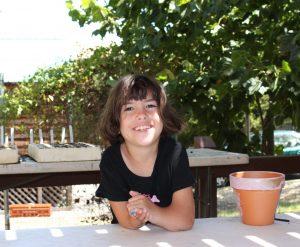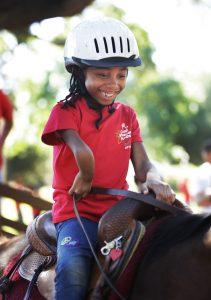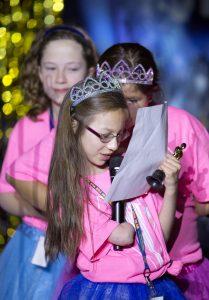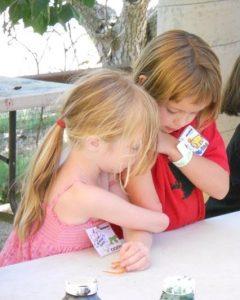
Your child’s teacher is a trained educational professional and has a wealth of knowledge to maximize the learning of all of their students. However, it is unlikely that your child’s teacher has taught a child with a CHD. This experience can be scary and uncomfortable for them until they get to know your child, but this does not reflect their ability as a teacher. You and your child’s teacher can work together to prepare your child for success in the classroom.
There are a variety of children’s books that have lead characters with congenital hand differences or speak generally about differences. You can review these books on our Resources Page, and/or share this list with your child’s teacher. You can also gift or loan these books to your child’s teacher. They can use the books as a tool in collaboration with your child to begin conversations early on. This sets the tone and expectation for inclusion in the classroom.
As your child approaches kindergarten, consider setting up a meeting with your child’s teacher before school starts. Teachers are usually very welcoming and receptive to meeting with a child’s family. Your child and their teacher can meet before the excitement and rush of the first day of school, so they are both better prepared to work together.
Here is a sample conversation outline of things to share with your child’s teacher at this meeting. Tailor this conversation to meet the needs of your family and your child’s teacher. Share components in whatever way feels most natural for your family.
Medical background of CHD
“My daughter was born with aphalangia, which means that she is missing fingers on her left hand. We do not know why this happened, and it is not a result of anything we did or did not do.”
The language your family uses for CHD
“We like to use the words’ limb difference’ or ‘little hand’ when we talk about her hand, please use these words also.”
How your family introduces CHD with other children
“When kids start asking about her hand, we say ‘That’s part of who she is, she has brown hair, green eyes, and a small hand. Sometimes hands look like this’.”
‘Show Off’
‘Show off’ different tasks such as building with blocks, carrying items, opening containers, putting on shoes and jackets, and writing. This familiarizes your chid’s teacher with how your child has already made adaptations and modifications. Your child’s teacher can support these in the classroom. This also increases the comfort of your teacher to expect these differences and help educate your child’s classmates as part of the classroom experience.
Different tasks that your child may need supports in and how to help your child best.
“My daughter is still working on zipping up her jacket, she may need help getting the zipper started.”
Things your child likes to do
“My daughter loves to dance, she takes ballet lessons, and she loves horses.”
Your concerns, so that you can work with the teacher to develop a plan to address these
“I am concerned with how her peers will interact with her hand, as school-aged kids notice her difference; she was teased recently on the playground. How do you manage teasing in the classroom, and what can she do if she is teased?
Features of adaptive equipment /prosthetic devices if you use them.
Share with your child’s teacher the purpose, features, and management of the equipment and devices as well as instructions you have told your child to do when using devices/ caring for devices. “This is called a splint, and it fits between my daughter’s thumb and her palm. It is to help widen this space. She is supposed to wear it at night, but she likes it and may bring it to school. It is hard plastic and will melt if left in the sun or on a heater. She knows she is not supposed to bring it to school because we don’t want to lose it or break it. Please take it if you see it, and we can come to pick it up later.”
Any additional information that is helpful for your child’s teacher to know
Ask your child’s teacher if they have any questions


 Teachers
Teachers
 Another way to communicate with your child’s teacher is to draft an “About Me.” This is a summary of activities that your child likes to do, with photos of them doing these activities. A visual depiction of your child’s abilities may be helpful to your child’s teacher.
Another way to communicate with your child’s teacher is to draft an “About Me.” This is a summary of activities that your child likes to do, with photos of them doing these activities. A visual depiction of your child’s abilities may be helpful to your child’s teacher. Another way to communicate with your child’s teacher is to draft a personal resume. This resume operates similarly to the
Another way to communicate with your child’s teacher is to draft a personal resume. This resume operates similarly to the  Teachers are trained to discuss topics relating to diversity and inclusion. You can help supplement their knowledge on limb difference by sharing the resources found on Social Scripts and Creating a Story section on the
Teachers are trained to discuss topics relating to diversity and inclusion. You can help supplement their knowledge on limb difference by sharing the resources found on Social Scripts and Creating a Story section on the